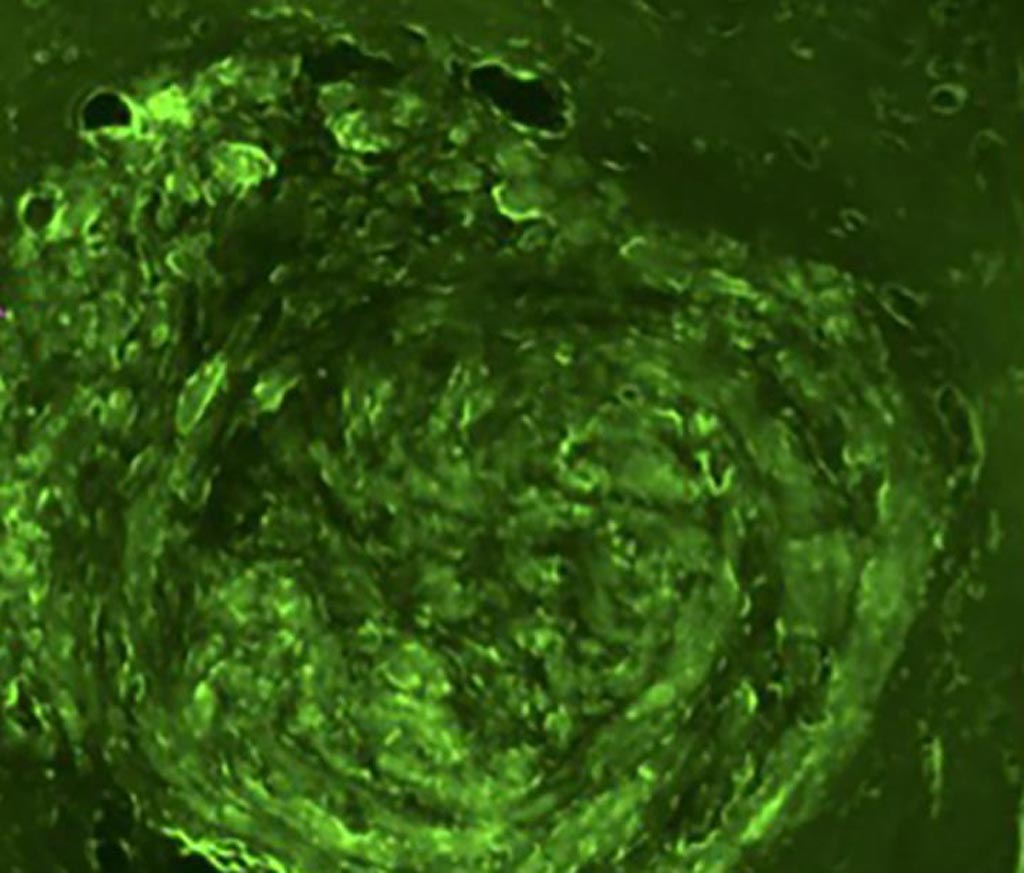Novel Biopsy Enabled by Focused Ultrasound and Microbubbles
By LabMedica International staff writers
Posted on 15 May 2018
A recent paper discussed the feasibility of using focused ultrasound in combination with microbubbles to generate the local release of mRNA from a glioblastoma tumor into the bloodstream for diagnosis of brain cancer by non-invasive liquid biopsy analysis.Posted on 15 May 2018
Although blood-based liquid biopsies have emerged as a promising non-invasive method to detect biomarkers in various cancers, limited progress has been made for brain tumors. One major obstacle is the blood-brain barrier, which hinders efficient passage of tumor biomarkers into the peripheral circulation.

Image: A brain tumor in a mouse that has been treated with green fluorescent protein-transduced glioblastoma cells (Photo courtesy of Washington University).
Investigators at Washington University (St. Louis, MO, USA) worked with a mouse glioblastoma tumor model to develop a method for bypassing the blood-brain barrier. They selected glioblastoma as the tumor model because it is the most frequent type of primary brain cancer in adults and is generally associated with a poor prognosis.
The investigators decided to combine focused ultrasound (FUS), a technique that employs ultrasonic energy to target tissues deep in the body without incisions or radiation, with microbubbles (bubbles smaller than one millimeter in diameter, but larger than one micrometer). Microbubbles that have been injected move through the circulatory system in a fashion similar to red blood cells. When the microbubbles reach the target organ, they rupture, generating minute holes in the blood-brain barrier that allow biomarkers from the brain tumor to pass through the barrier and enter the bloodstream.
The investigators used two glioblastoma tumor models (U87 and GL261), developed by intracranial injection of respective enhanced green fluorescent protein transduced glioblastoma cells. Some of the animals were treated by FUS in the presence of systemically injected microbubbles. Others received FUS with no microbubbles or microbubbles without FUS. The effect of treatment on plasma tumor-related mRNA levels was determined using quantitative polymerase chain reaction (qPCR).
The investigators wrote in the April 26, 2018, online edition of the journal Scientific Reports that tumor mRNA was only detectable in the FUS and microbubble-treated U87 mice and was undetectable in the control U87 mice. This finding was replicated in the GL261 mice. Levels of tumor mRNA were 1,500–4,800 fold higher in the FUS and microbubble-treated GL261 mice than that of the control mice for the three acoustic pressures.
"Once the blood-brain barrier is open, physicians can deliver drugs to the brain tumor," said senior author Dr. Hong Chen, professor of biomedical engineering at Washington University. "Physicians can also collect the blood and detect the expression level of biomarkers in the patient. It enables them to perform molecular characterizations of the brain tumor from a blood draw and guide the choice of treatment for individual patients. I see a clear path for the clinical translation of this technique. Blood-based liquid biopsies have been used in other cancers, but not in the brain. Our proposed technique may make it possible to perform a blood test for brain cancer patients."
Related Links:
Washington University













